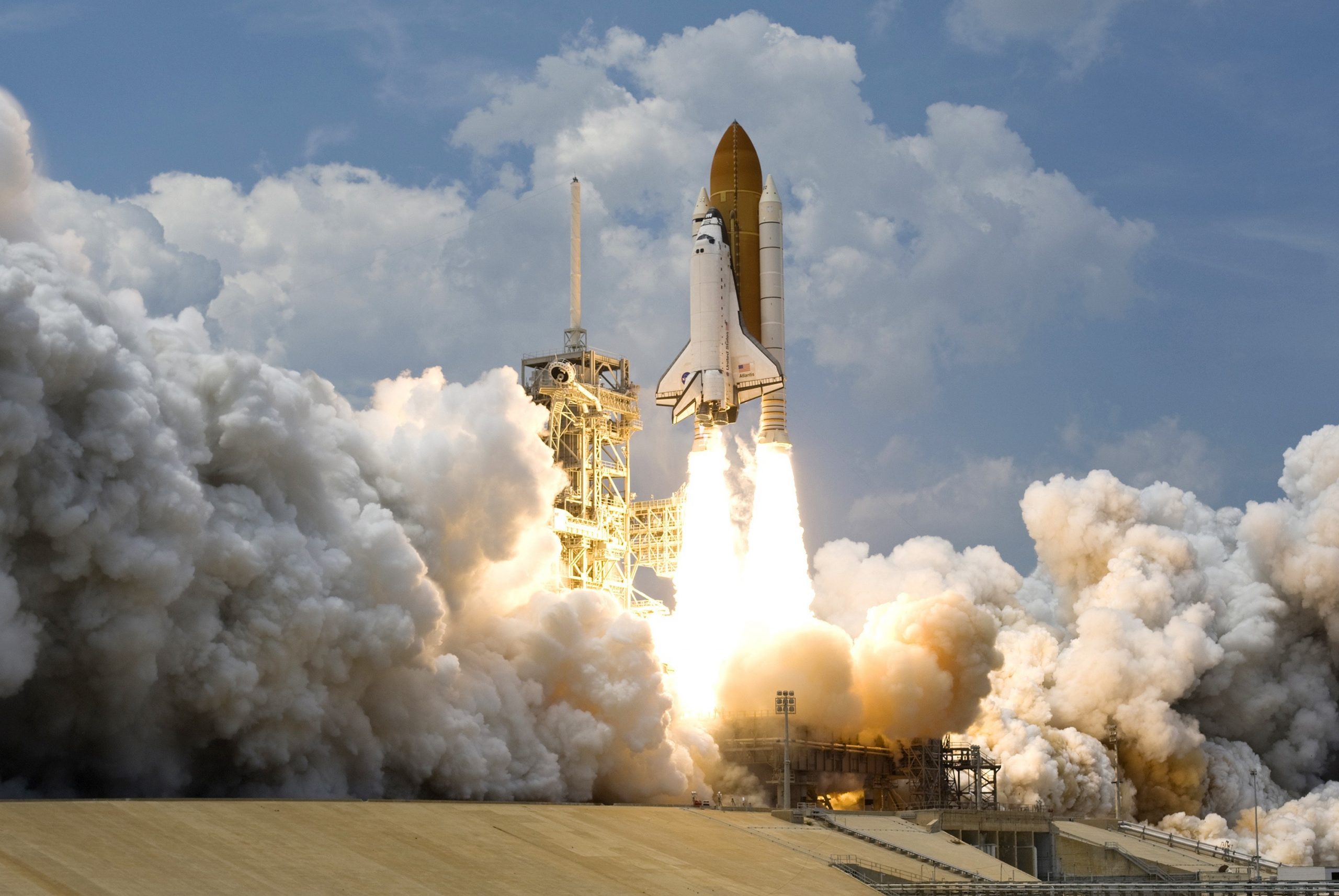Rocket launches look absolutely spectacular: a loud roar, a fire as the engines ignite, a huge cloud of steam and up the metal beast goes – leaving a fiery trail behind. But whatever is coming out of those nozzles cannot be good for the environment, right?
What goes in and what comes out
Naturally, the materials a rocket expels depends on the type of propellant* used.
*Just to be clear, by propellant we mean the fuel itself plus oxidizer, the material that releases oxygen (since there is no oxygen in space to sustain the combustion). Rockets use propellant in liquid form, solid form or combination of the two.
⛽
Liquid hydrogen LH2 (fuel) and oxygen LO2 (oxidizer) combo is considered one of the ‘cleanest’ rocket propellants. Why, the byproduct of hydrogen combustion is …water. Some of the most powerful rockets in the history of spaceflight, such as Shuttle (Shuttle’s iconic orange External Tank housed liquid hydrogen and oxygen supplies) and Saturn V (second and third stage) used this type of propellant. The European Ariane 5 core stage and, most recently, second stage, run on LH2 too. So did the upper stage of Atlas 5 rocket that on July 30, 2020 lifted Perseverance rover off the surface of the Earth.
⛽
Another popular choice of a rocket propellant is refined kerosene fuel, known as PR-1, combined with oxygen. While less expensive and easier to store than hydrogen, PR-1 is not exactly eco-friendly. Its burning produces CO2 and CO as well as black soot (also called black carbon) particles.
The first stage of the mighty Saturn V rockets that carried Apollo astronauts to the Moon, Russian Soyuz rockets and, most recently, the Atlas 5 first stage all used this type of fuel.
The exhaust gases these propellants produce are mostly water vapor and Carbon Dioxide. The good news is, although both are greenhouse gases, the overall greenhouse gas emissions from the rockets is negligible compared to that from other CO2 and water vapor sources. On the other hand, the black soot particles produced by kerosene rocket engines, should be cause for concern.
⛽
Now, what about solid propellants? Those are used to push the rocket at the start of the flight or to boost the payload to higher orbit. Most modern solid rocket engines use propellants made of powdered aluminum (fuel) and ammonium perchlorate (oxidized). Burning this stuff produces alumina droplets as well as chlorine. Are these substances harmful to our atmosphere? We know that high concentrations of chlorine causes Ozone mini-holes, though these events are only temporary. The impact of the alumina particles, on the other hand, is much more dramatic.
Focus on stratosphere: ozone layer depletion
When it comes to rocket emission, our major concern is the effect it may have on the ozone layer, the part of the Earth’s stratosphere that blocks over 90% of the Sun’s harmful UV radiation.
Both black soot from kerosene engines and alumina from solid rocket boosters are particles that can linger in the stratosphere for several years. The two act differently, but both contribute to the ozone layer destruction. Alumina particles serve as surfaces on which chemical reactions that damage the ozone layer occur. Black soot absorbs the heat from the Sun and warms up its surrounding, disturbing the fragile atmospheric balance as a result. How much do these particles contribute to the ozone layer depletion? We do not yet know!
At the moment, rocket propulsion emission goes unregulated. But as the space industry continues to grow, we need to find out exactly what and how much we are delivering into the air and introduce measures to protect the Earth’s atmosphere. Do you agree?
Further reading
Limits on the Space Launch Market Related to Stratospheric Ozone Depletion
3-2-1… How and where to see a rocket take-off
We would love to hear from you, so feel free to post your questions and comments below. Alternatively, contact our Portable Planetarium team via our website http://wonderdome.co.uk

